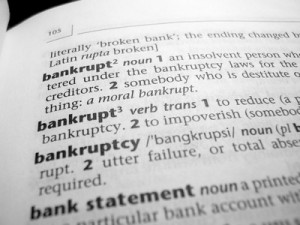 Chapter 7 bankruptcy discharges most types of debt. This means that once the case is completed the debtor is no longer liable for the dischargeable debts listed in the bankruptcy. However, discharging a debt does not remove the lien against secured property like houses and cars. The debtor may no longer be personally liable for the debt, but if they don’t pay their house or car payment, the lender will enforce the lien and repossess or foreclose the property. That is fine if the debtor intends to surrender the house or car to the creditor, but if they want to keep their property then they need to address the creditor’s claims.
Chapter 7 bankruptcy discharges most types of debt. This means that once the case is completed the debtor is no longer liable for the dischargeable debts listed in the bankruptcy. However, discharging a debt does not remove the lien against secured property like houses and cars. The debtor may no longer be personally liable for the debt, but if they don’t pay their house or car payment, the lender will enforce the lien and repossess or foreclose the property. That is fine if the debtor intends to surrender the house or car to the creditor, but if they want to keep their property then they need to address the creditor’s claims.
A reaffirmation agreement is a new contract signed by the bankruptcy debtor and the secured creditor. These agreements state the terms of the agreement between the parties and are filed with the court. Basically, they say that the debtor can keep the secured property but they must make payments to the creditor as described in the agreement. These agreements are binding after the discharge. For this reason debtors should consider very carefully whether they should be reaffirming the debt (whether they can afford the payment), because if they default after reaffirming the debt then the creditor can collect from them personally under state law.
There are a couple of provisions of the Bankruptcy Code which are designed to protect the debtors from entering into reaffirmation agreements they can’t afford. First, these agreements have to be filed with the court. If it doesn’t appear that the debtor can afford the payment based upon the schedules filed in the case and the reaffirmation agreement itself, then the judge will require that the debtor come to court and explain why they are reaffirming the debt. If the judge doesn’t like what he hears then he will not sign off on the agreement. Second, if a debtor signs a reaffirmation agreement and then changes his mind about reaffirming the debt, he can rescind the agreement simply by filing notice of the rescission and sending a copy to the creditor.